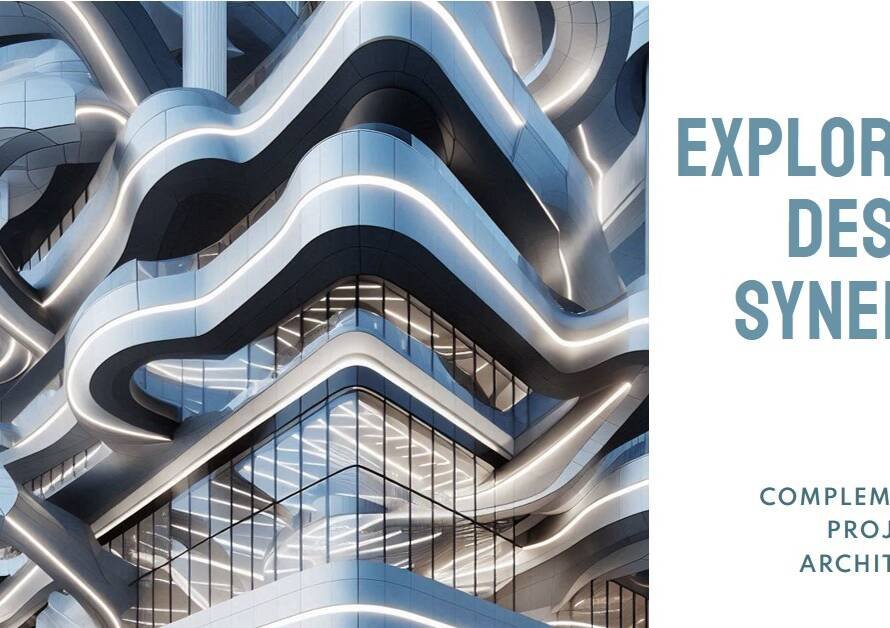
Table of Contents
Building your dream home is an exciting journey that requires meticulous planning, thoughtful decision-making, and a clear vision of your ideal living space. From conceptualizing designs to selecting materials and managing budgets, every step plays a crucial role in turning your dream into a tangible reality. In this guide, we’ll explore six essential preparation tips to help you navigate the home-building process smoothly and achieve the home of your dreams.
1. Define Your Vision: Creating a Blueprint for Success
The first step in building your dream home is to define your vision clearly. Take time to envision the type of home you want, including its size, layout, architectural style, and essential features. Consider your lifestyle needs, future plans, and aesthetic preferences to create a comprehensive blueprint for your ideal living space.
Engage with architects, designers, or experienced builders to transform your vision into actionable plans. Collaborate closely during the design phase, incorporating your ideas while also considering practical aspects such as local building codes, zoning regulations, and environmental considerations. A well-defined vision serves as a roadmap for the entire construction process, ensuring that every aspect of your dream home aligns with your expectations and requirements.
2. Set Realistic Budgets: Balancing Aspirations with Financial Prudence
Building a dream home involves financial investment, and setting realistic budgets is crucial to ensure a successful and stress-free construction journey. Begin by estimating overall construction costs, including land acquisition, design fees, permits, materials, labor, and contingencies. Factor in additional expenses for landscaping, interior decor, and unforeseen expenses to create a comprehensive budget plan.
Consult with financial advisors or construction professionals to gain insights into cost-saving strategies, financing options, and budget allocation for different phases of construction. Prioritize essential elements of your dream home while remaining flexible to adjustments that align with your budgetary constraints. By setting clear financial boundaries and maintaining open communication with your construction team, you can avoid financial surprises and achieve your dream home within your means.
3. Research and Select Reliable Builders: Building Partnerships for Success
Choosing the right builder is paramount to the success of your dream home project. Conduct thorough research, gather recommendations from trusted sources, and review portfolios of potential builders to assess their expertise, experience, and quality of work. Look for builders with a proven track record in delivering projects similar to your vision and standards of craftsmanship.
Schedule meetings or consultations with shortlisted builders to discuss your project requirements, timelines, and budget constraints. Evaluate their communication style, transparency, and willingness to accommodate your ideas and concerns. Request detailed proposals, including cost estimates, project timelines, warranties, and contractual terms, before making a final decision. Building a strong partnership with a reliable and reputable builder ensures smooth project execution, quality construction, and peace of mind throughout the building process.
4. Prioritize Functionality and Efficiency: Designing for Practical Living
While aesthetics play a significant role in designing your dream home, prioritizing functionality and efficiency is equally important. Work closely with architects and designers to optimize space utilization, enhance natural light, promote energy efficiency, and integrate smart technologies for convenience and sustainability.
Consider practical aspects such as room layouts, storage solutions, traffic flow, and accessibility features, especially if you have specific needs or anticipate future lifestyle changes. Incorporate sustainable materials, energy-efficient appliances, and green building practices to minimize environmental impact and long-term operational costs. By balancing aesthetics with functionality and efficiency, you can create a home that not only looks stunning but also supports comfortable, practical living for you and your family.
5. Select Quality Materials and Finishes: Building for Durability and Style
The choice of materials and finishes significantly influences the durability, aesthetics, and maintenance requirements of your dream home. Research and select high-quality materials that align with your design vision, climate considerations, and budgetary constraints. Consult with architects, designers, or material experts to understand the performance characteristics, lifespan, and maintenance needs of different building materials.
Prioritize durability, sustainability, and aesthetic appeal when selecting materials for key elements such as roofing, flooring, walls, windows, and exterior finishes. Balance timeless design elements with contemporary trends to create a home that feels both inviting and enduring. Invest in reputable brands and certified products to ensure quality craftsmanship, safety standards, and long-term satisfaction with your home’s interior and exterior finishes.
6. Plan for Future Expansion and Flexibility: Adapting to Changing Needs
As you envision your dream home, consider future expansion possibilities and design flexibility to accommodate evolving lifestyle needs and family dynamics. Incorporate versatile spaces such as multi-purpose rooms, convertible areas, or flexible layouts that can adapt to different functions or be easily modified in the future.
Anticipate technological advancements, aging-in-place considerations, and potential family growth when planning room sizes, accessibility features, and infrastructure for home automation or renewable energy systems. Consult with your design team to integrate scalable design elements, structural provisions, and utility connections that support future upgrades or expansions without significant structural modifications. By planning for future flexibility and adaptability, you can future-proof your dream home and ensure that it remains a functional and comfortable sanctuary for years to come.
7. Embrace Sustainable Design Practices: Building Responsibly for the Future
Incorporating sustainable design principles and practices not only benefits the environment but also enhances the comfort, health, and efficiency of your dream home. Explore options for passive design strategies such as orientation, natural ventilation, daylighting, and thermal insulation to reduce energy consumption and enhance indoor comfort levels.
Select eco-friendly building materials, low-impact construction techniques, and energy-efficient systems such as HVAC, lighting, and water fixtures to minimize environmental footprint and operating costs. Consider incorporating renewable energy sources such as solar panels, rainwater harvesting systems, or green roofs to further enhance sustainability and resilience against climate change impacts. Collaborate with architects, engineers, and sustainability experts to integrate holistic green design solutions that align with your values and long-term goals for a greener, healthier home.
8. Ensure Comprehensive Insurance Coverage: Protecting Your Investment and Peace of Mind
Building your dream home involves significant financial investment, and ensuring comprehensive insurance coverage is crucial to protect your investment against unforeseen risks and damages. Consult with insurance professionals or reputable insurers specializing in construction and homeowner’s insurance to understand coverage options, policy terms, and recommended coverage limits for your project.
Secure appropriate insurance coverage for construction phases, including builder’s risk insurance, liability insurance, and property insurance to mitigate risks related to accidents, natural disasters, or construction delays. Transition to comprehensive homeowner’s insurance upon completion of construction to safeguard your home, belongings, and liabilities against potential damages, theft, or legal issues. Regularly review and update your insurance coverage as needed during and after construction to maintain adequate protection and peace of mind throughout your homeownership journey.
9. Communicate Clearly and Regularly: Fostering Collaboration and Transparency for Dream Home
Effective communication is the cornerstone of a successful home-building project, fostering collaboration, transparency, and mutual understanding among all stakeholders involved. Establish clear lines of communication from the outset, including regular meetings, progress updates, and open channels for feedback, questions, and concerns.
Maintain proactive communication with your builder, architects, designers, contractors, suppliers, and relevant authorities throughout the construction process. Clarify expectations, timelines, milestones, and decision-making processes to ensure everyone is aligned with project goals and requirements. Address issues or changes promptly, document agreements, and maintain written records of communications, contracts, and project specifications to avoid misunderstandings or disputes later on. By fostering a culture of clear communication and collaboration, you can navigate challenges effectively, make informed decisions, and achieve successful outcomes for your dream home project.
10. Plan for Comprehensive Home Maintenance: Preserving Long-Term Value and Comfort


Once your dream home is complete, proactive home maintenance is essential to preserve its value, performance, and aesthetics over time. Develop a comprehensive home maintenance plan that includes regular inspections, repairs, and preventive maintenance tasks for various systems, components, and exterior features of your home.
Schedule professional inspections and maintenance checks for HVAC systems, plumbing, electrical systems, roofing, insulation, and structural integrity according to manufacturer recommendations and industry standards. Invest in quality maintenance tools, equipment, and materials for DIY tasks or hire reputable professionals for complex maintenance or repair needs. Keep detailed records of maintenance activities, warranties, and service contracts to track performance, identify issues early, and address maintenance needs promptly to avoid costly repairs or replacements down the line. By prioritizing proactive home maintenance, you can ensure that your dream home remains a comfortable, safe, and enjoyable living space for years to come, preserving its long-term value and appeal.


